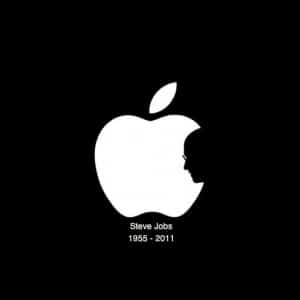Making Branding Personal
The death of Steve Jobs created a reverberation of sadness across the globe. Many millions mourned the loss of a man who was seen as an inspiration and a design visionary. He will be missed.
As I ponder the life of this man whom I have known only really through design and brand, I cannot help but reflect on the effect Steve Jobs had on Apple: the company and the brand as a whole. His personal branding and design tactics were quite unique and very effective.

We can learn many things about effective branding and logo design from Steve Jobs, here are a few:
1. Branding Tip – Be Intentional
Back in the early 1980s when the Apple brand and Macintosh computers were first entering the marketplace, Jobs helped create a personal computer product which was intended to be different right from the beginning. It was designed to be truly accessible and intuitive.
The design, look, and feel right down to programming was all intentional. It was also the first computer to incorporate beautiful typography. Likewise, the original rainbow coloured Apple logo was designed to humanise the company and make it accessible to the common people: a value Apple has maintained and held since the beginning.
2. Branding Tip – Don’t be Precious
After a time of absence from Apple, Steve Jobs returned to the company in the late 1997. At the time he declared the desktop computer industry to be “dead”. He took the opportunity to transform the company, and the logo. Just one year after his return he took the old rainbow logo and replaced it with the now infamous monochromatic logo. Many fought his decision to alter the logo but Jobs was determined that change was necessary. The first iMac was released in 1998, bearing the new logo.
The re-designed Apple logo is now one of the most recognizable logos in the world.
3. Branding Tip : Have Nothing to Lose
“Remembering that you are going to die is the best way
I know to avoid the trap of thinking you have something to lose”
– Stanford commencement speech 2005
When the Apple Store was first rolled out in 2001, many told Jobs that it would be the end of Apple. He was told that having products available on the shelves for customers to handle and touch would result in stealing. He didn’t care.
With the introduction of the Apple store, Apple’s brand awareness grew exponentially; customers became aware of the brand identity and its innovation and creativity. With the stores in place and Apple’s touchable ground-breaking products on display, the company’s profits grew exponentially. So then did their brand awareness. Even more than that – customers began to feel they were part of something. This created dedication.
Take Risks And Dream Big
Steve Jobs’ willingness to take a risk and not worry about the outcome widened the scope, breadth and impact of the brand immensely. This big risk created far wider reaching brand awareness for Apple, helping to make the logo even more globally recognised and not just for computers but for the style, personality, and community it offered through iPods, iPhones and the iPad which created a market all its own.
“It’s more fun to be a pirate than to join the navy” – Steve Jobs
Steve Jobs was unwilling to be contained or to hold to market trends and the opinions of others. He stuck to his gut and was uncompromising in what he believed in choosing to make a difference and change the world rather than fit in.
As a result, the Apple logo and brand is one of the most powerful in the world.
